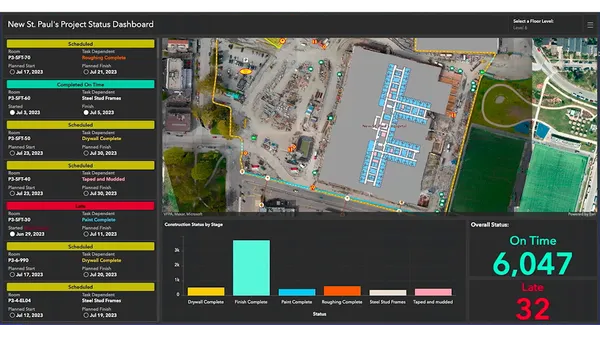Dive Brief:
- The International Organization for Standardization (ISO) has published the first global Building Information Modeling (BIM) standards.
- The new standards are "Part 1: Concepts and principles," and "Part 2: Delivery phase of the assets" of ISO 19650 — "Organization and digitization of information about buildings and civil engineering works, including building information modeling (BIM)." The standards, according to the ISO, will provide the necessary framework to help designers and contractors from different countries collaborate more efficiently on all phases of construction projects and will encourage BIM’s wider use.
- ISO 19650 is based on British standard BS 1192 and public standard PAS 1192-1, which the ISO said has helped reduce user construction costs by 22%. The organization plans to develop and release additional standards including a Part 3 on managing the operational phase of assets and a Part 5 dealing with BIM security, digital built environments and asset management.
Dive Insight:
The ISO points to a PricewaterhouseCoopers report that projects construction industry output will increase 85% to $15.5 trillion by 2030, so increased efficiency is important if construction companies are going to be able to handle the growth.
Some authorities have already mandated some level of BIM use. Starting this year, architects in Abu Dhabi, United Arab Emirates, must use BIM for all major projects.
In addition, the United Kingdom, in an effort to achieve better efficiencies in the maintenance of public projects, rolled out a Level 2 BIM mandate in 2016. All construction stakeholders — architects, engineers, material vendors — are required to communicate via common file formats like Construction Operations Building Information Exchange (COBie) or Industry Foundation Class (IFC). This does not involve the modeling that is often associated with BIM, but lays a firm foundation for future expansion of the requirements.
Unlike in the U.K., there is no single agency that handles public work in the U.S., so the establishment of one federal BIM standard is unlikely. However, that doesn’t mean that some public entities haven’t adopted its use.
Early last year, for instance, the Los Angeles Community College District (LACCD) established a BIM mandate for its $9.5 billion construction and modernization program. In order to be considered for new construction and renovation work, design-build teams must identify an individual to serve as BIM lead. That person coordinates the BIM workflow, works with shared data servers, tracks projects on the LACCD's BIM website and makes sure that the district has a BIM model to use in its maintenance operations after construction is complete. Construction teams must also create a "virtual theater" in which all stakeholders can view 3D BIM models.













